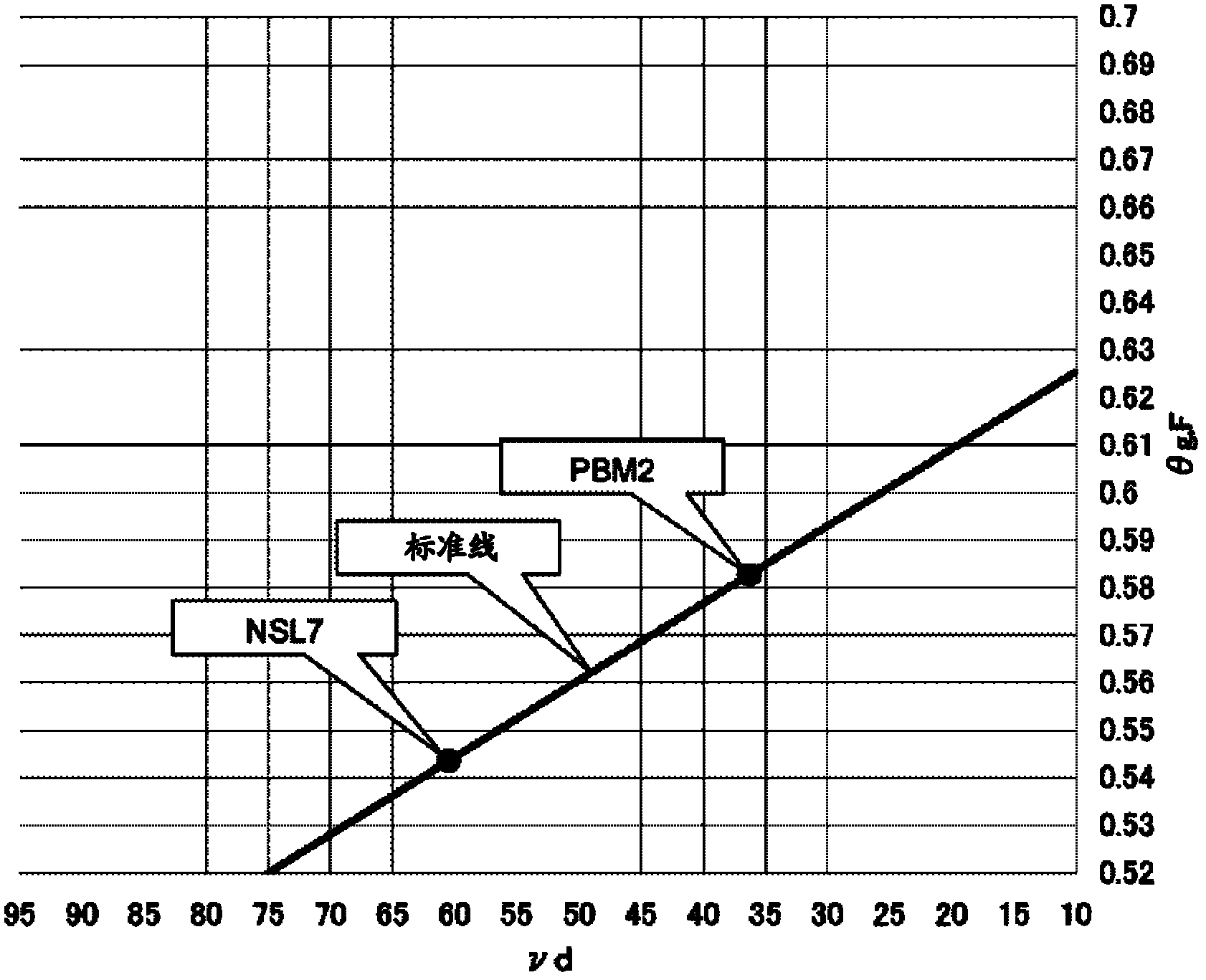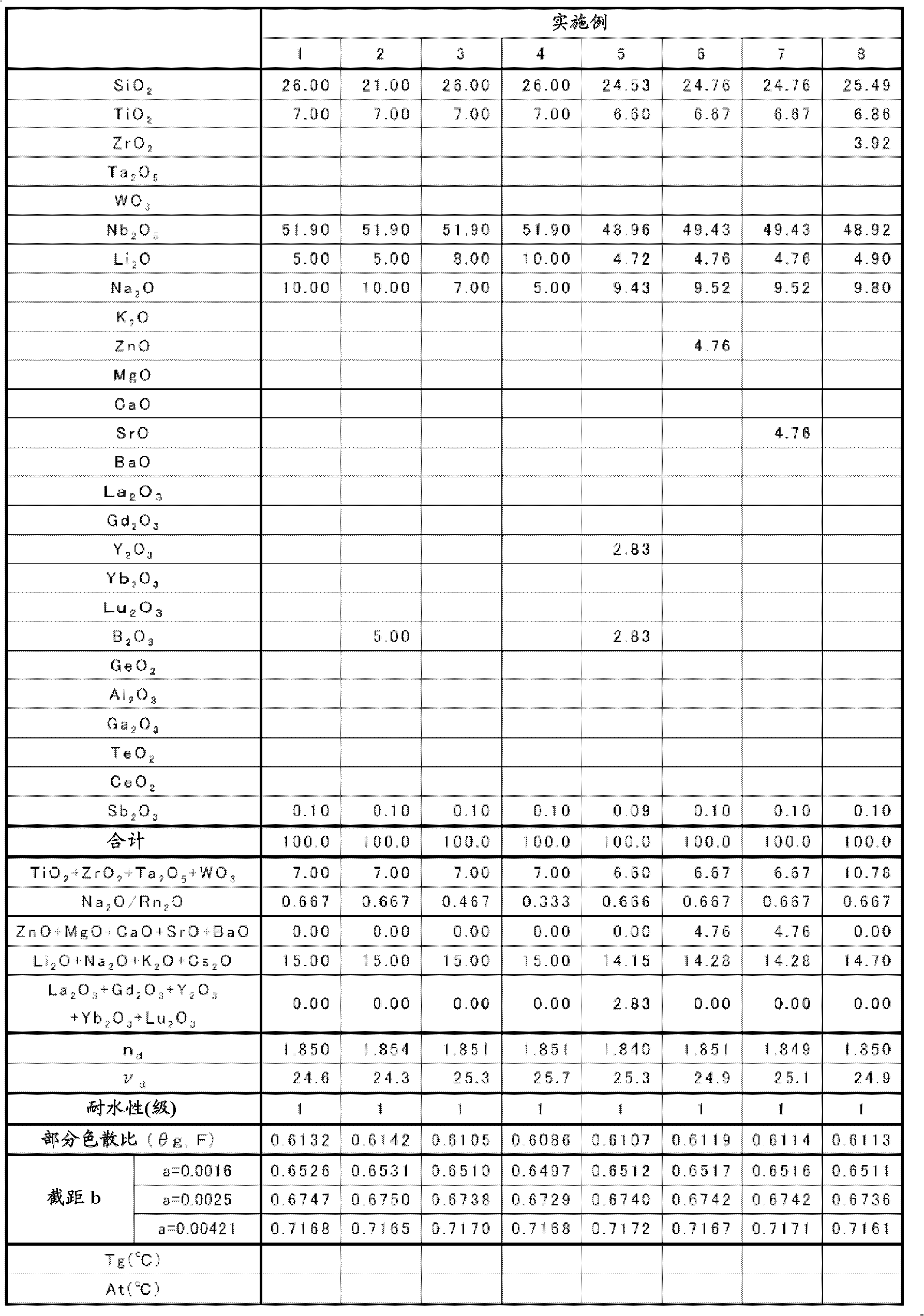Optical glass
An optical glass, glass technology, used in optics, optical components, instruments, etc.
- Summary
- Abstract
- Description
- Claims
- Application Information
AI Technical Summary
Problems solved by technology
Method used
Image
Examples
Embodiment
[0192] The composition and refractive index (n d ), Abbe number (v d ), partial dispersion ratio (θg, F), chemical durability (water resistance), glass transition temperature (Tg), deformation point (At), wavelength showing 70% spectral transmittance (λ 70 ), and the results of overexposure are shown in Tables 1 to 33. In addition, the following examples are the purpose of illustration after all, and are not limited to these examples.
[0193] The glasses of Examples (No.1-No.250) and Comparative Examples (No.1-No.2) of the present invention are all produced as follows: as raw materials for each component, corresponding oxides, hydroxides, Carbonates, nitrates, fluorides, hydroxides, metaphosphoric acid compounds, and other high-purity raw materials that are generally used in optical glass are prepared according to the composition of each example and each comparative example shown in Tables 1 to 33. Weigh and mix uniformly according to the ratio, then put it into a platinum...
PUM
 Login to View More
Login to View More Abstract
Description
Claims
Application Information
 Login to View More
Login to View More - R&D
- Intellectual Property
- Life Sciences
- Materials
- Tech Scout
- Unparalleled Data Quality
- Higher Quality Content
- 60% Fewer Hallucinations
Browse by: Latest US Patents, China's latest patents, Technical Efficacy Thesaurus, Application Domain, Technology Topic, Popular Technical Reports.
© 2025 PatSnap. All rights reserved.Legal|Privacy policy|Modern Slavery Act Transparency Statement|Sitemap|About US| Contact US: help@patsnap.com



